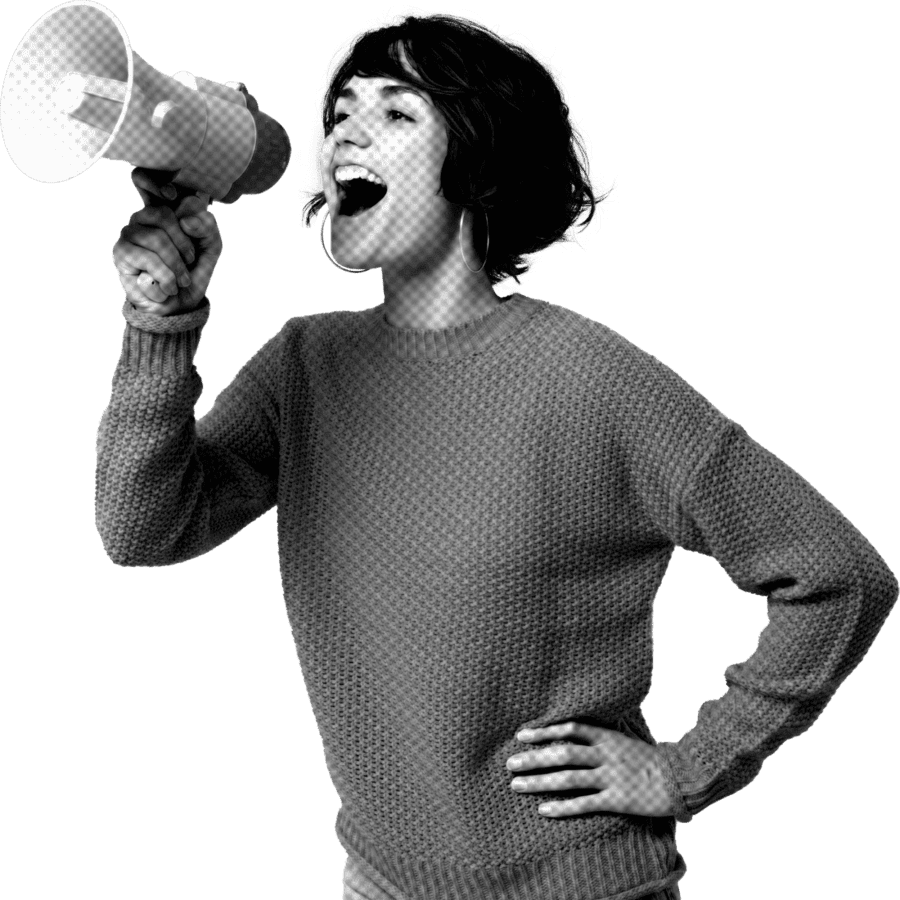When I say that there may be a link between Halloween and Disability, people tend to be shocked. That’s because this link isn’t immediately obvious or explicitly mentioned. But with Halloween season in full swing at the moment, it’s important to cover this topic.
Recently, I have been thinking a lot about the subject, as well as its ties to villainy, evil and fear. In this article, I will discuss how all of these ideas come together, and how brands can celebrate Halloween without perpetuating the old narratives around disability.
Table of Contents
How Is Halloween Tied to Disability?
Over time, there has been a popular trope in fiction to create Disabled villains. The most prominent examples of these include The Joker from Batman, Darth Vader from Star Wars and Captain Hook from Peter Pan. In this sample, The Joker has mental health conditions while Darth Vader and Captain Hook have visible differences.
The reason why these characters are given these disabilities is because it adds to the feeling that we have about that character, and in this case, that’s not a positive one. Historically, society has associated disability with divine punishment and evil, so over the years, we have become accustomed to associating disability with negative impressions. If we see an illustration of a Disabled character, subconsciously we are more likely to think that character is evil, ugly, or not to be trusted.

During Halloween, we are reminded of these impressions. In western culture, it is tradition for people to dress up as villains and evil characters for the night and to then celebrate the occasion together at parties. As we have established, a high proportion of villains and evil characters have disabilities, and as people want to dress up as these characters, they will be replicating the character’s disabilities with props, costumes and body paint.
As a society, there have been recent movements around “My culture is not a costume,” where we have progressed to not dress up as people from other cultures because we know that cultural appropriation is morally wrong. However, there isn’t a mainstream discussion of “My Disability is not a costume,” and so individuals will appropriate disabilities that they do not have to look “scarier,” or “more evil,” in line with how their character of choice is presented. This can be damaging to the Disabled Community, as each year we continue to construct false narratives and connotations that Disability and evil must be linked.
Unfortunately though, as we’ll see now, this is only the beginning of the problems that exist for the Disabled Community at this time of year.
Perception Problems for the Disabled Community During Halloween
Public Perception
Through my research and from listening to multiple voices in the Disabled Community, one issue that appeared semi-regularly was trouble surrounding public perception of mobility aids and accessibility needs being catered for.
As it has already been established, many villains have appearances that align with disability, including using mobility aids, such as walking sticks. The Riddler’s iconic question mark-tipped stick is an example of this. As the Disabled individual goes around town during Halloween, wearing a Halloween costume while using a mobility aid, they are more likely to be faced with intrusive, personal questions such as “Is that a part of your costume?”

There is an increasing awareness that asking Disabled people questions surrounding their disability is unacceptable. This is because it can be triggering to the Disabled person, as well as the fact that they do not owe you their medical history. However, around Halloween, such situations are again deemed ‘socially acceptable,’ even if morally they are not.
On top of this, Disabled people are more likely to face hostility over using accessibility adjustments at this time of year. The previous paragraph highlighted how the public is more likely to doubt Disabled people over their mobility aids at this time of the year due to confusion over whether or not they are a part of a costume. Taking this a step further, if said Disabled people used things such as priority seating, they are more likely to be wrongly called out by others who think that the Disabled person is using a costume to gain advantage of something that they shouldn’t be entitled to but actually are.
All of this goes back to the issue that society links Disability and Halloween. When a member of the public sees someone wearing a Halloween costume and also using a mobility aid, they link the two together because growing up they have been taught that villains tend to be Disabled. It becomes difficult to see that wearing a Halloween costume and using a mobility aid, for example, can be two mutually exclusive things.
Societal Perception
In addition, there are also problems surrounding society’s view of disability that come from Halloween.
First of all, there is a very straightforward reinforcement of society’s views on the link between disability, villainy and evil from increased exposure to this. Even if society has subconscious views surrounding disability and villainy, people are unlikely to recognise this on a daily basis as they go through their standard routines. However, when such narratives are presented on social media, television, packaging and everywhere else, it reminds society how it links these ideas together.
However, there is also a deeper perception shift that can happen at this time of the year where the struggles of Disabled people are undermined by costume wearing. When people decide on which Halloween costume to wear, they can (wrongly) choose one that includes a mobility aid or that temporarily disables the wearer (e.g. the character has an upper limb difference so the wearer is unable to use one of their arms). The wearer will only be required to adjust their appearance to accommodate this for a few hours, whether that be at a party or to go trick-or-treating. At the end of the night, they will then remove this and will return to their standard appearance.
The problem here is that this creates an inauthentic view of disability that can alter perceptions on how daily life is for the Disabled community. For example, someone using a walking stick as part of their costume will not have an authentic experience of what it is like for a member of the Disabled community who uses a walking stick on a daily basis. The Disabled person will have to navigate their whole routine with this mobility aid in mind, which can particularly affect things such as travel. A Disabled person cannot “take off,” their Disability, it is something they live with.
The result here is that this creates a narrative where the impact of Disability is diminished in the perception of the costume wearer. As they only have to adjust themselves for a few hours, they will not understand the wider implications of what such a Disability can have on someone’s daily life.
Where Brands Go Wrong
What is important to note here is that brands are often not the creators of these false narratives, but are more often perpetuating them.
At this time of year, brands often repackage their products to have Halloween-themed packaging, trying to convince us that things like a pack of gelatin sweets are horror-inducing (“Fear the gummy, smiling pumpkin faces!”). Quite often, this is just harmless fun meant to capture the spirit of the occasion and connect with audiences. Where this can become a problem though is if these brands were to start incorporating Disabled villains into their products. Peg-legged pirate chocolate bars may sound cute on the surface, but there soon becomes an issue when it reinforces to the public that such appearances are acceptable and fine. The logic becomes: “Well I saw [X Brand] use that character this year, so it must be okay for me to dress up as them for Halloween.” As stated in this section’s introduction, brands can often perpetuate false Halloween-related narratives more than create them.
However, there are also times when specific companies can also create these false narratives and add to society’s view on the Disabled villain trope even further. An example of this would be costume companies who create new Halloween ranges. We have all seen stories in the news where such companies have had to withdraw specific items, often relating to ideas such as mental health patients and similar, where it has been established that these were created in bad taste. The creation of such items not only shows society’s internalised ableism when it comes to the Disabled villain trope, but also perpetuates and normalises it in the minds of others as these products are released.
Can We Do Better? Case Study: Davros in Doctor Who
I cannot hide the fact that I am, and always have been, a huge fan of Doctor Who. I am currently watching all of the classic episodes for the first time and am enjoying seeing how Doctor Who has changed over the years.
One recent change that newer fans of the show may have noticed is the change of Davros’s appearance. Davros is the creator of the Daleks, The Doctor’s most feared enemy. They are squid-like beings of hate, encased in metallic armour plating that allows them to be mobile and “exterminate” all living things. Their leader, Davros, who has been present since The Fourth Doctor in the 1970’s, is a senior being with visible scarring across his face who sits in a suit identical to the bottom half of a Dalek which appears and supports Davros like a sort of futuristic powered wheelchair.
It is clear that the Dalek’s physical appearance is meant to inspire fear into the viewer, as underneath their metal casings, void of personality, rests an alien creature that can be difficult to look at. While this is fine for these fictional aliens, the same cannot be said for Davros. While Davros is not a human, his appearance can be argued to resemble humans very closely, we even see him as a human child during the Twelfth Doctor’s era. Therefore, he must be evaluated in the same way we would look at other characters in the Disabled villain trope.
This would be the case, however, if it wasn’t for the recent change that showrunner and Head Writer Russell T. Davies pulled on this character. Instead of Davros’s traditional appearance that we have grown used to seeing over the past 50-or-so years, Davros is now presented as a non-disabled man. Davies cited the Disabled villain trope as the reason for this, saying that “the world changes and when the world changes, Doctor Who has to change as well.”
We are yet to see the new Davros in a full episode, only being shown briefly in a Children in Need special alongside David Tennant’s brief return as the Fourteenth Doctor, but it is clear that the show has a commitment to diversity and presenting progressive narratives. Doctor Who has always had underlying progressive narratives, but this has been a lot clearer in recent years with such changes. I feel it is unlikely that we will ever see the return of other villains such as John Lumic and Max Capricorn who also fell into similar traps during the Tenth Doctor’s era.
What this demonstrates is that companies and media organisations can make big, bold moves to adapt classic narratives to make them fit with a more progressive society. Davros was a key character in the Doctor Who franchise for fifty-ish years, but now he will be changed forevermore so new audiences will be pulled from the association between Disability and villainy. If a character who has been around for this long can be changed, then I’m sure we can do the same with others too.

Conclusion
In summary, society has created a link between Disability and Halloween through an outdated trope of the Disabled villain. Each year, this can create heightened problems for the Disabled community. The best thing that we can do about this as individuals is to be mindful about the choices we make at this time of year and why we are making them. For instance, if you want to dress as a certain character during Halloween, analyse why the character looks the way they do. Are there any defining characteristics relating to disability? And support media that promotes progressive narratives surrounding this topic and Halloween.
If you are a brand and are concerned about your comms during Halloween, you can reach out to us at Purple Goat Agency and we’ll be able to help you.
Until next time, thanks for reading, and a very happy Halloween! 🎃




